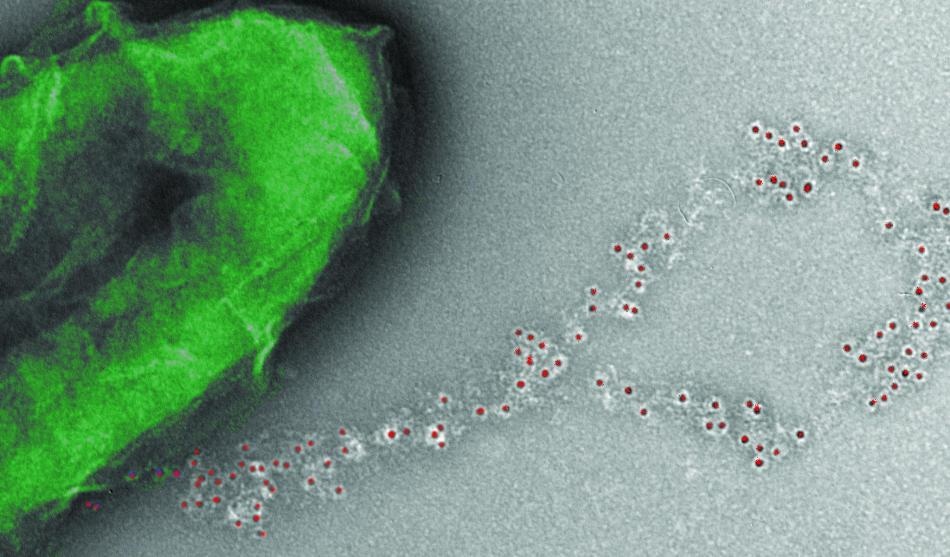Jul 30 2019
In the most recent paper from the Geobacter Lab headed by Derek Lovley, a microbiologist at the University of Massachusetts Amherst, he and his teammates have reported “a major advance” in the mission to create electrically conductive protein nanowires in the bacterium Geobacter sulfurreducens for use as chemical and biological sensors.
 Geobacter with decorated wires. (Image credit: UMass Amherst)
Geobacter with decorated wires. (Image credit: UMass Amherst)
The study particulars have been reported in the current issue of ACS Synthetic Biology, an American Chemical Society journal.
Lovley remarks that electrically conductive protein nanowires present in Geobacter have been a topic of deep research in his lab for many years since they provide several advantages over costly carbon nanotubes and silicon nanowires that need high-energy processes and harmful chemicals to manufacture.
On the contrary, Geobacter’s nanowires can be sustainably produced in large amounts and can be cultured with renewable feedstocks. The microbiologist remarks that they need low energy input—one estimation reports that it uses 100 times less energy for production in comparison with silicon nanowires—and they can be recycled.
When compared to silicone wires, protein nanowires are thinner, more sensitive, and more flexible, hence making it feasible to pack more into a smaller space, with superior sensing abilities. In addition, they are stable in bodily fluids or water—a vital feature for biomedical applications.
Lovley, who revealed the electricity-conducting microbes in Potomac River mud over 30 years ago, states, “In our previous research we focused on tuning the conductivity of the wires by modifying the gene for the protein that Geobacter assembles into the wire. We now have a toolbox of wires to choose from with a million-fold range in conductivity. That provides broad flexibility for electronic device design.”
One of the most promising applications for protein nanowires is biomedical and environmental sensors. We want to design the wire that specifically binds a biologic or chemical of interest. When that molecule binds to the wire it will be obvious as a change in electric signal.
Derek Lovley, Microbiologist, University of Massachusetts Amherst
“The next goal was to see if we could modify the nanowires’ surface properties without destroying their conductivity, which is what we’ve shown in this latest proof-of-concept paper,” Lovley emphasizes.
Latest studies at his lab show that it is possible to incorporate peptides up to nine amino acids long to the amino acid backbone of the nanowires, and “decorating” it with even more peptides is also possible.
The scientists tested two different peptides “decoration” cases—they are called so since the peptides exposed along the outer surface of the wires look like tiny bulbs on a sequence of Christmas lights, describes Lovley.
They first built a strain of G. sulfurreducens that created synthetic nanowires decorated with a six-histidine “His-tag” that particularly attach nickel to the wire surface. Then, they showed the likelihood of creating wires with two decorations, the His-tag and a “linker” nine-peptide “HA-tag” exposed on the exterior surface.
Furthermore, they showed that the number of decorations on the wire could be regulated by incorporating a genetic circuit to control the expression of the HA-tag. The conductivity of the wires was not reduced by either of the tags, the authors report.
These broad opportunities for transforming the nanowires with peptides, and also their “green,” sustainable attributes, hold potential for further advances, the scientists state.
The nanowires’ properties “can now be readily modified to have new functionalities. For example, as we show in the paper, peptides can be designed to specifically bind chemicals or biologics of interest, which will be useful for designing nanowire sensors.”